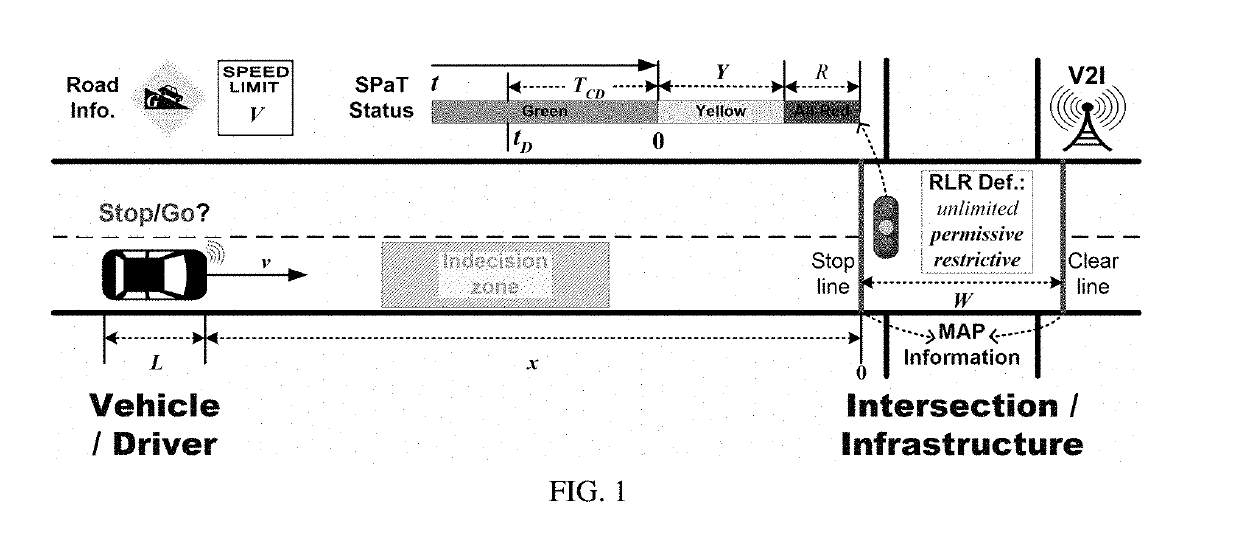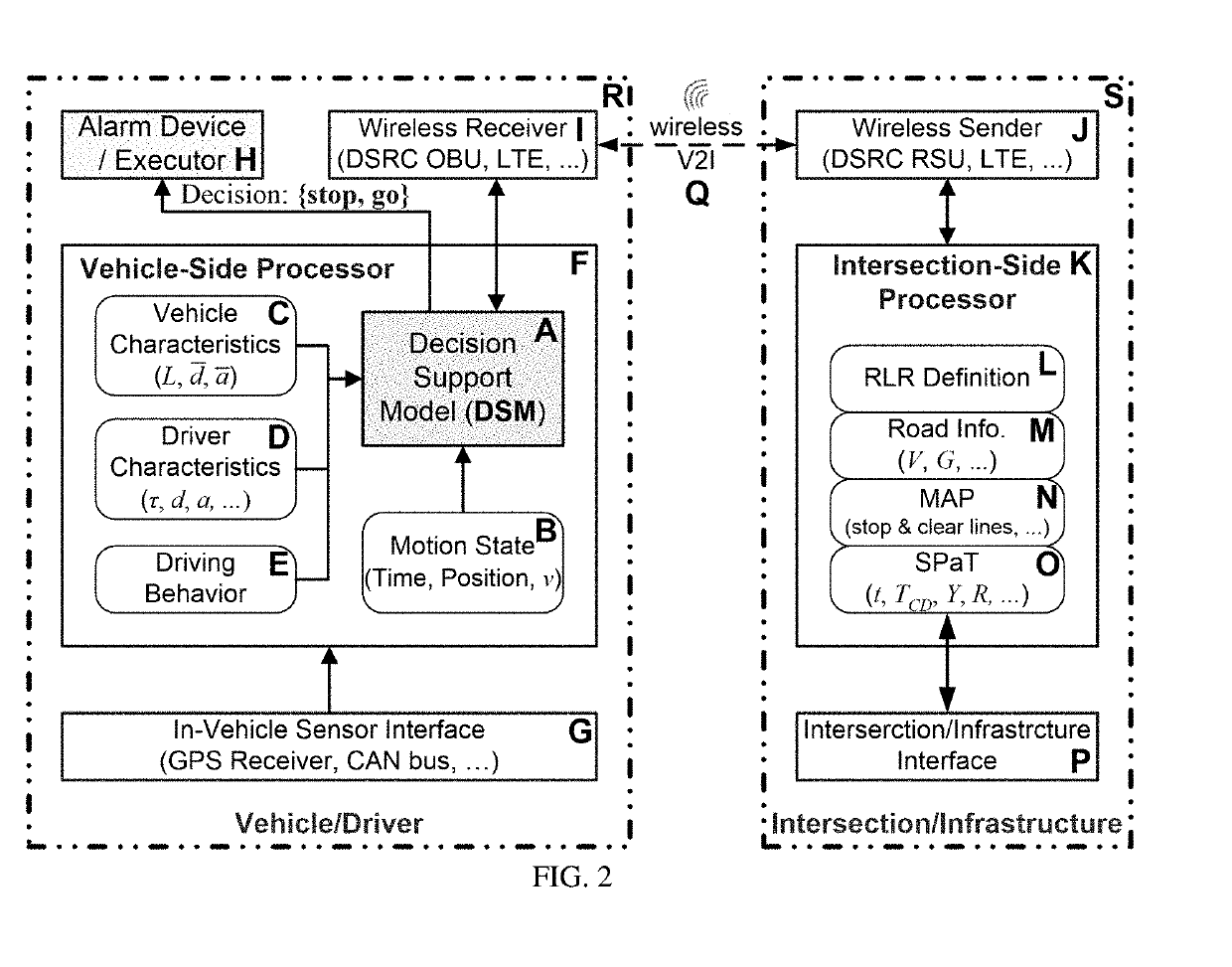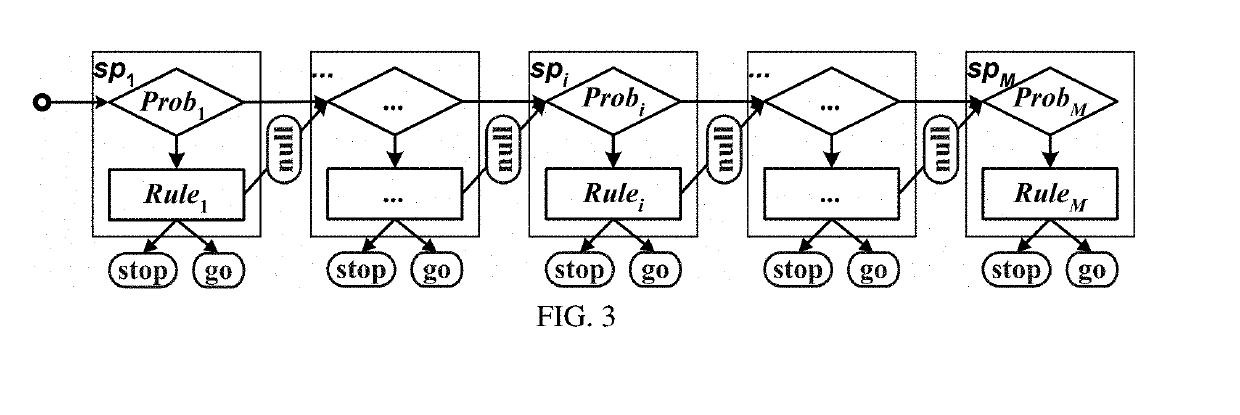Smart In-Vehicle Decision Support Systems and Methods with V2I Communications for Driving through Signalized Intersections
a technology of in-vehicle decision support and signalized intersections, applied in probabilistic networks, process and machine control, instruments, etc., can solve problems such as insufficient information or inaccurate information for drivers or vehicles, and indecision zone problems at intersections that are a major challenge for drivers and vehicles, so as to improve both traffic safety and intersection throughput , the effect of improving safety and efficiency
- Summary
- Abstract
- Description
- Claims
- Application Information
AI Technical Summary
Benefits of technology
Problems solved by technology
Method used
Image
Examples
Embodiment Construction
[0029]FIG. 1 shows the generic illustration of the indecision zone problem of a vehicle moves on a road passing through a signalized intersection. Some information is known about the intersection and associated infrastructure. The intersection geometry and topology (i.e. MAP) contains the location information of the stop line and the clear line for each entry movement, etc. The intersection width W is the distance between the stop line and the clear line. On the Signal Phase and Timing (SPaT) of the traffic light, let t be the remaining green time, TCD be the green countdown time, Y represent the yellow interval, and R represent the all-red interval. The green countdown time is a virtual concept meaning that TCD is known (TCD≥0) earlier before the onset of yellow, although the green time could be variable before t=TCD. The road information contains the speed limit V, the grade G, and other road conditions on the approach road. Each vehicle follows a specific definition of red-light ...
PUM
 Login to View More
Login to View More Abstract
Description
Claims
Application Information
 Login to View More
Login to View More - R&D
- Intellectual Property
- Life Sciences
- Materials
- Tech Scout
- Unparalleled Data Quality
- Higher Quality Content
- 60% Fewer Hallucinations
Browse by: Latest US Patents, China's latest patents, Technical Efficacy Thesaurus, Application Domain, Technology Topic, Popular Technical Reports.
© 2025 PatSnap. All rights reserved.Legal|Privacy policy|Modern Slavery Act Transparency Statement|Sitemap|About US| Contact US: help@patsnap.com



